

Display No. 1I
DUNCAN, Charles David Robert
Charles Duncan (known as David) joined the Royal Marines as a Bandsman. He had previously served in the Royal Navy, including operations off Palestine 1936-1939.
At the outbreak of the Second World War, Duncan was on board HMS Achilles which was called to patrol the Pacific and Atlantic Coasts of South America for German vessels and was subsequently involved in the Battle of the River Plate on 13 December 1939. In 1943 he returned to the Royal Marine School of Music.
Duncan transferred to the Royal New Zealand Navy (RNZN) in 1949. He joined HMNZS Bellona as a bandmaster and was later the RNZN Bandmaster. After his retirement in 1955, he moved to Fiji where he helped establish the Royal Fiji Police Band.
Awarded medal(s)
Medal Description [Left to Right]:
The Naval General Service Medal 1915-1962
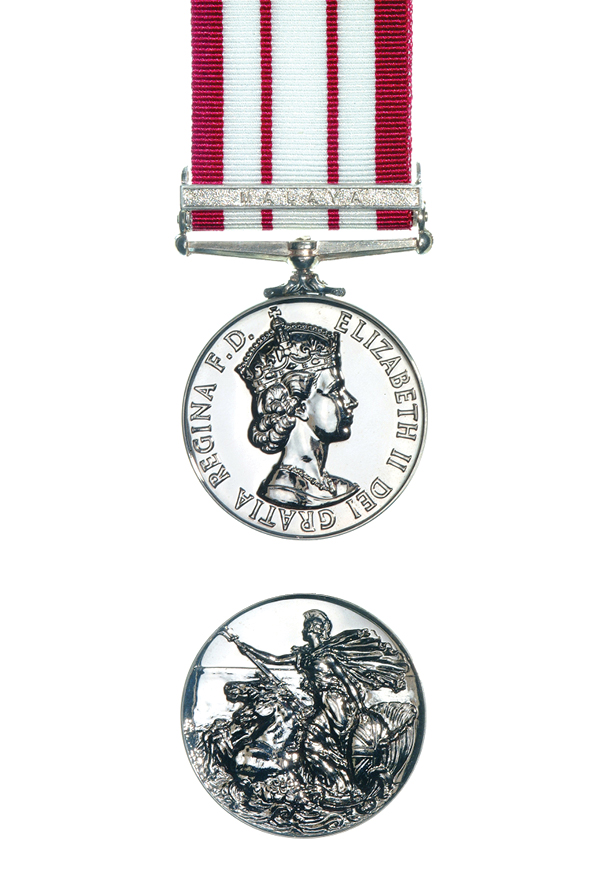
The Naval General Service Medal (NGSM) 1915-1962, was instituted in 1915 to recognise service in minor naval operations for which no separate medal was intended. They were always issued with a clasp for the specific area of operation. A total of seventeen clasps were awarded. Examples in our collection include the ‘Persian Gulf 1909-14’ clasp for operations against gun-runners; the ‘Palestine 1936-39’ and ‘Palestine 1945-48’ clasps which were issued for service in the pre-war Arab uprising and post-war Jewish insurgency; the ‘Minesweeping 1945-51’ clasp which was awarded for six months minesweeping service afloat; the ‘Malaya’ clasp recognising the service of naval personnel, including the Royal New Zealand Navy, during the Malayan Emergency of 1948-1960; and the ‘Yangtze 1949’ clasp for those on HMS Amethyst and other vessels attacked by Communist Chinese forces.
The 1939-1945 Star
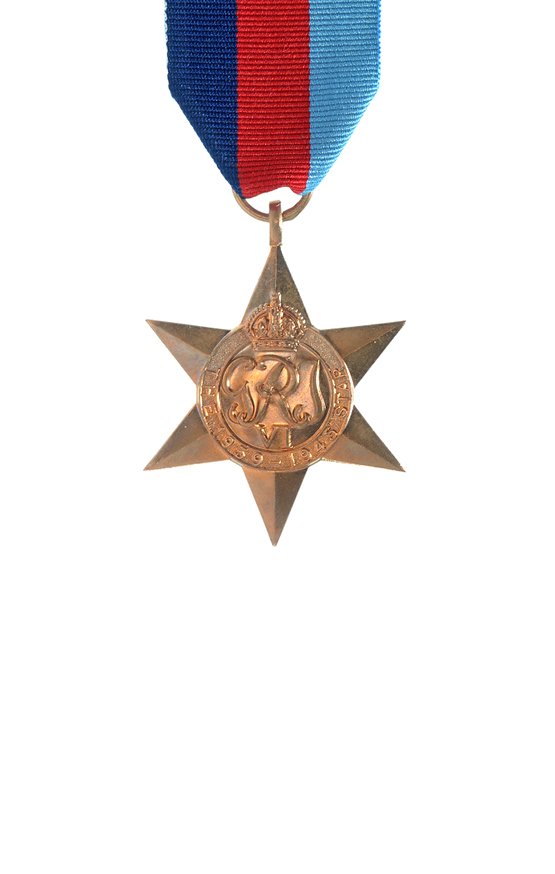
The 1939-45 Star is the first in a series of eight campaign stars instituted in 1945 to recognise service in World War Two. The ribbon has three equal vertical stripes of dark blue, red and light blue. The dark blue stripe symbolises the service of the Navy and the Merchant Navy, the red stripe symbolises the service of the Army, and the light blue stripe symbolises the service of the Air Force. The equal width bands represent the equal contributions of the three service arms towards victory. The ribbon was devised by King George VI. Two clasps could be awarded with this medal: ‘Battle of Britain’ and ‘Bomber Command’. Only aircrew would qualify for these clasps although a small number of Fleet Air Arm naval pilots flew for the air force and would be eligible for the ‘Battle of Britain’ clasp.
The Atlantic Star
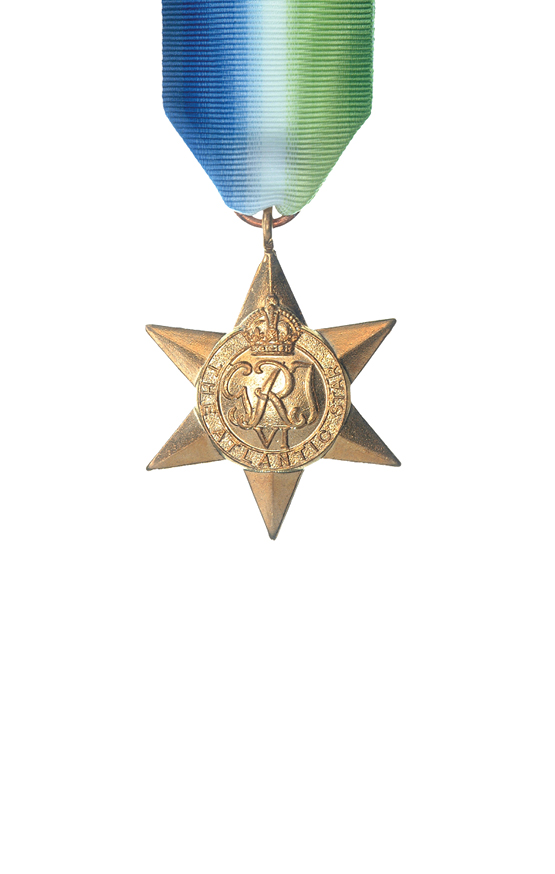
The Atlantic Star was awarded for service during the Second World War. It was instituted to commemorate the Battle of the Atlantic the longest continuous military campaign in the Second World War running from 3 September, 1939 – 8 May, 1945. Six months naval service or four months air service in the Atlantic, United Kingdom (‘home’) waters or North Russian waters was normally required. The ribbon is watered silk coloured blue, white and green, symbolising service in the oceans. Two clasps could be awarded with this medal: ‘France and Germany’ and ‘Air Crew Europe’. Personnel issued the Atlantic Star who then qualified for either the France and Germany and the Air Crew Europe Stars were awarded a clasp in respect of the second only (as only one clasp could be worn on the star).
The Pacific Star
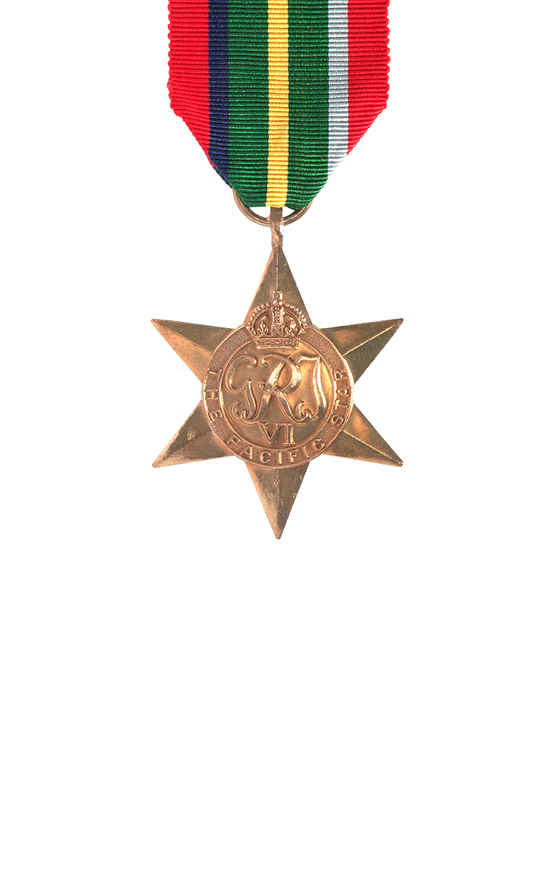
The Pacific Star was awarded in the Second World War for operational service in the Pacific between 8 December 1941 and 2 September 1945. This medal was also awarded for certain specified service in China, Hong Kong, Malaya and Sumatra: between 8 December 1941 and 25 December 1941 (for Hong Kong); between 8 December 1941 and 15 February 1942 (for China and Malaya); and between 8 December 1941 and 23 March 1942 (for Sumatra). The centre of the ribbon is dark green (symbolising the jungle) with a central yellow stripe (symbolising the beaches). On the outer edges are wide stripes of red (representing the Army), with narrow stripes of dark blue and light blue (representing the Navy and Air Force) between the stripes of dark green and red. A ‘Burma’ clasp could be awarded with this medal. Personnel qualifying for both the Pacific and Burma Stars were awarded the first star but only a clasp in respect of the second.
The War Medal 1939-1945
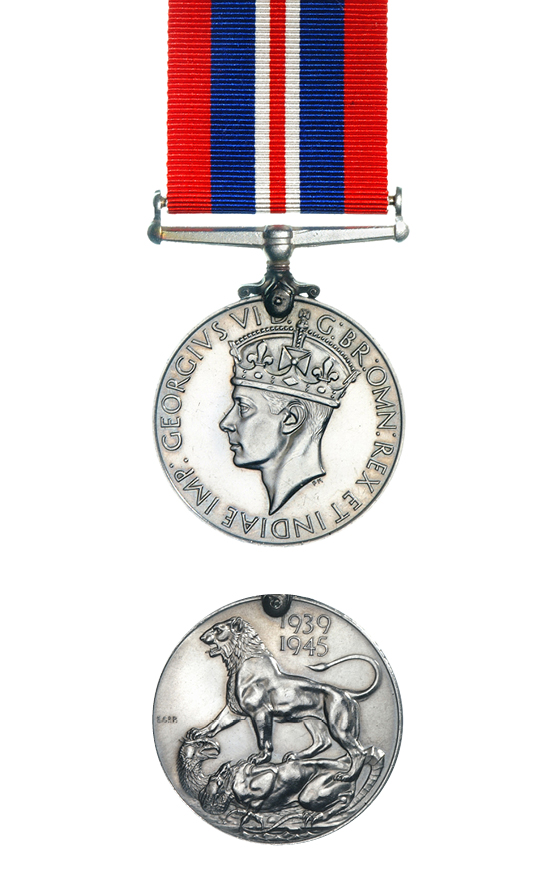
The War Medal 1939-45 was awarded across the British Commonwealth to all full-time members of the Armed Forces in the Second World War for 28 days service between 3 September 1939 and 2 September 1945, irrespective of where they were serving. The ribbon is the red, white, and blue of the (British) Union Flag. There is a narrow central red stripe with a narrow white stripe on either side. There are broad red stripes at either edge, the two intervening stripes being blue.
A bronze oak leaf on the medal ribbon denotes that the recipient was Mentioned in Despatches. To be Mentioned in Despatches a member of the armed forces had their name mentioned in an official report, written by a superior officer, and sent to a higher command. The report would describe the individual’s gallant or meritorious action in the face of the enemy.
Royal Naval Long Service and Good Conduct Medal
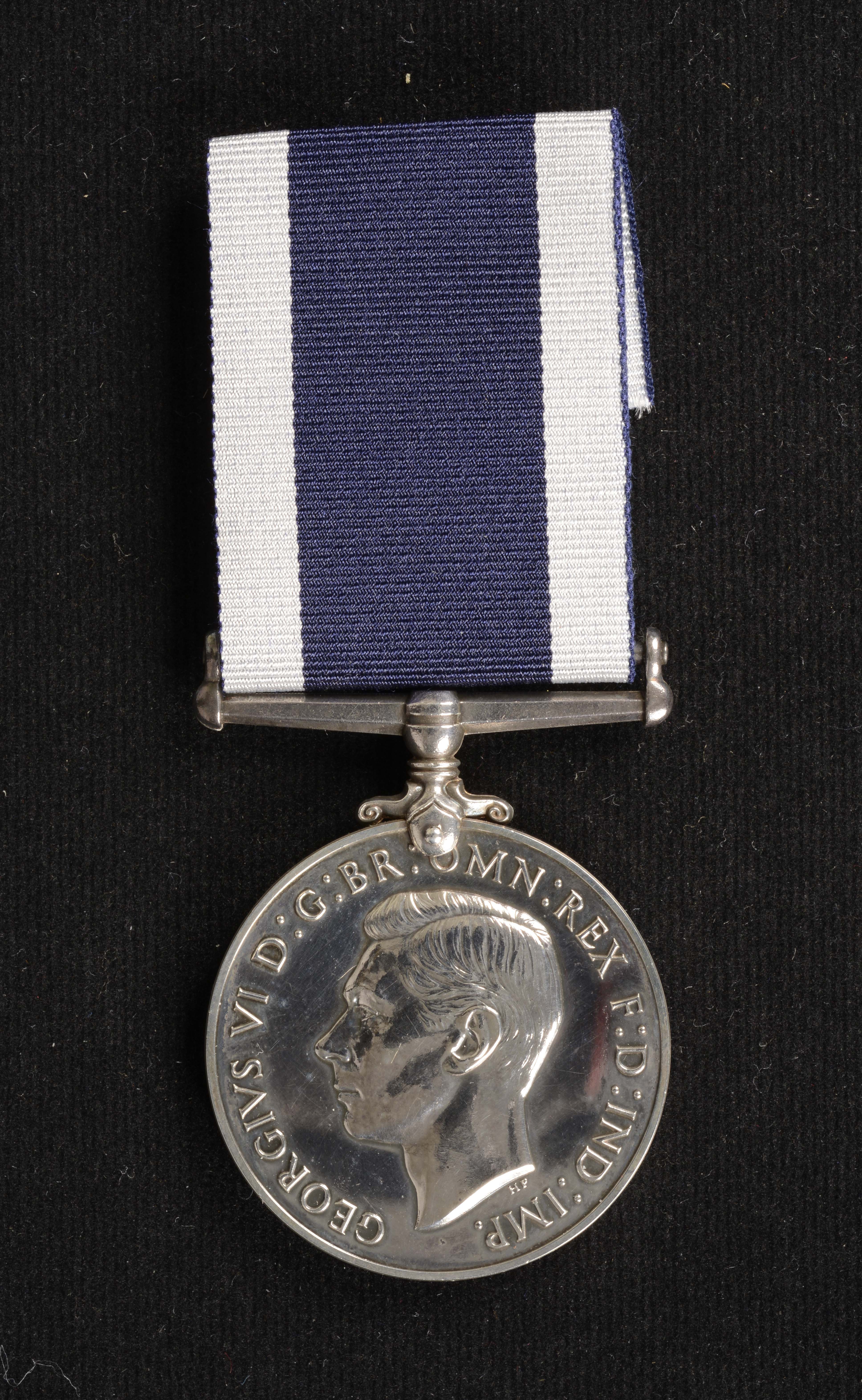
Awarded to ratings who have served a minimum of 15 years in the Royal Navy (previously 21 or 10 years), the first version of this medal was instituted in 1831 and it is still issued to Royal Navy personnel today. It features the reigning monarch’s head on the obverse and HMS Victory on the reverse with the recipient’s details engraved or impressed on the edge of the medal. This medal was also issued to eligible personnel serving in the New Zealand Division of the Royal Navy from 1921-1941 and then to Royal New Zealand Navy personnel from 1941-1981. In 1985 a New Zealand Royal Navy Long Service and Good Conduct Medal was introduced bearing the exact same design.
Special interest medal(s)
Display No. 27F
Medal Description [Left to Right]:
Gold Medallion for Tug of War

Gold medallion for tug of war, no other details known.
Gold Medal for Tug of War

Gold medal for tug of war inscribed ‘3rd CS 1936 – 7 Bayonets.’
Silver Medallion for Tug of War

Silver medallion awarded for winning IOM Garrison Tug of War Competition 1944.
Silver Medal for Tug of War
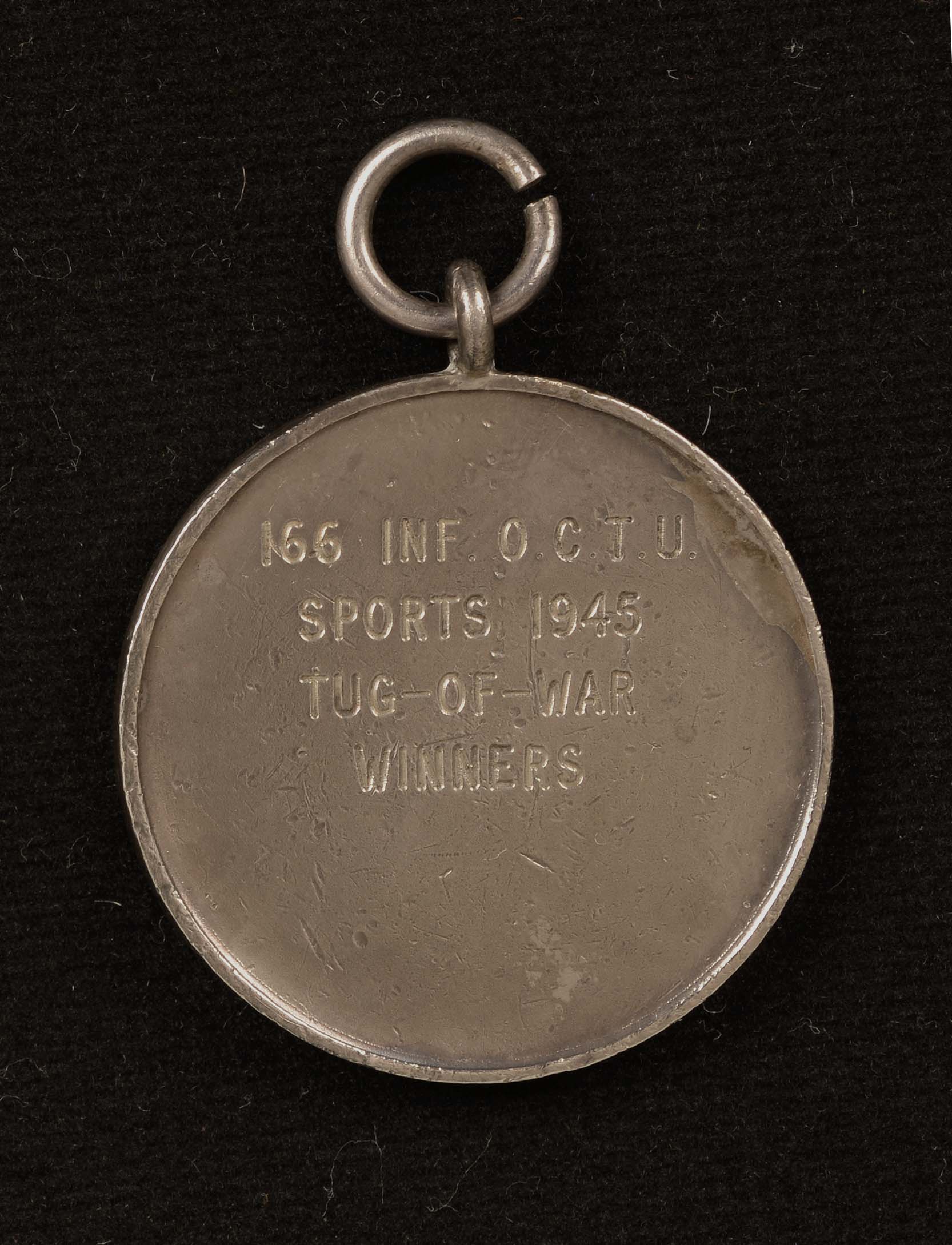
Silver medal awarded to 166 Infantry Officer Cadet Training Units in 1945 as the Tug of War winners.


